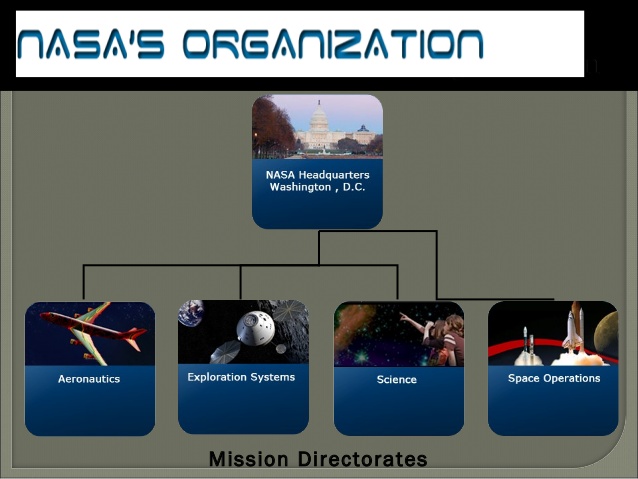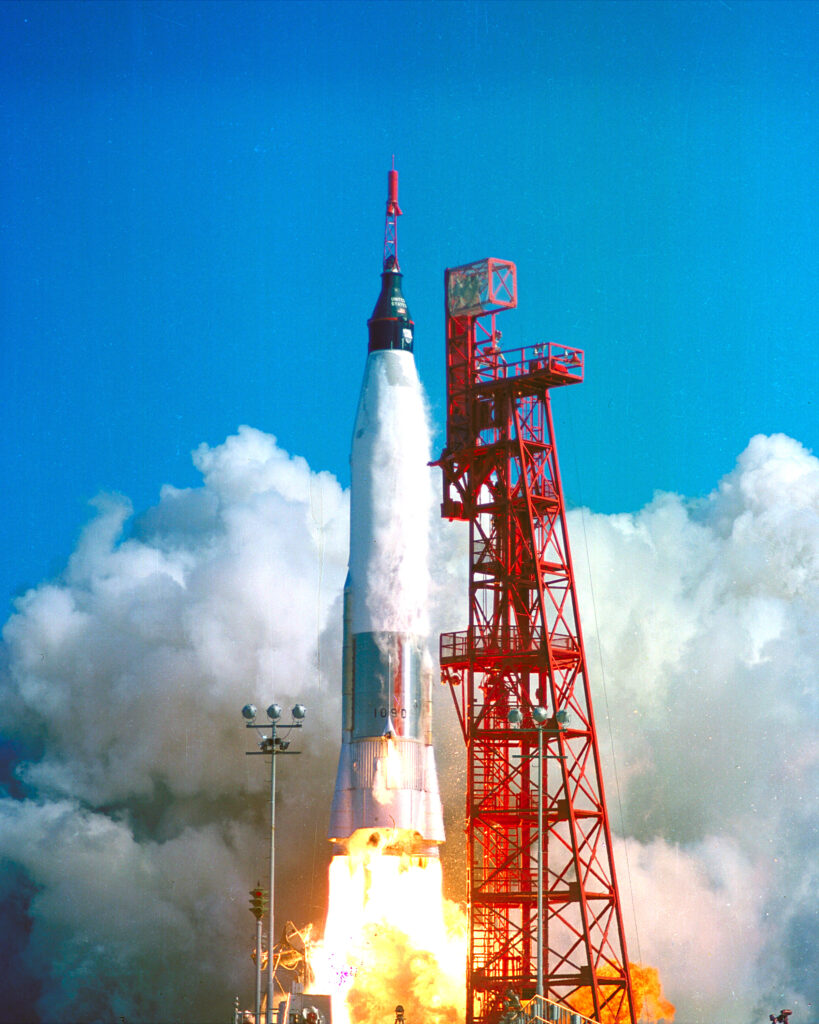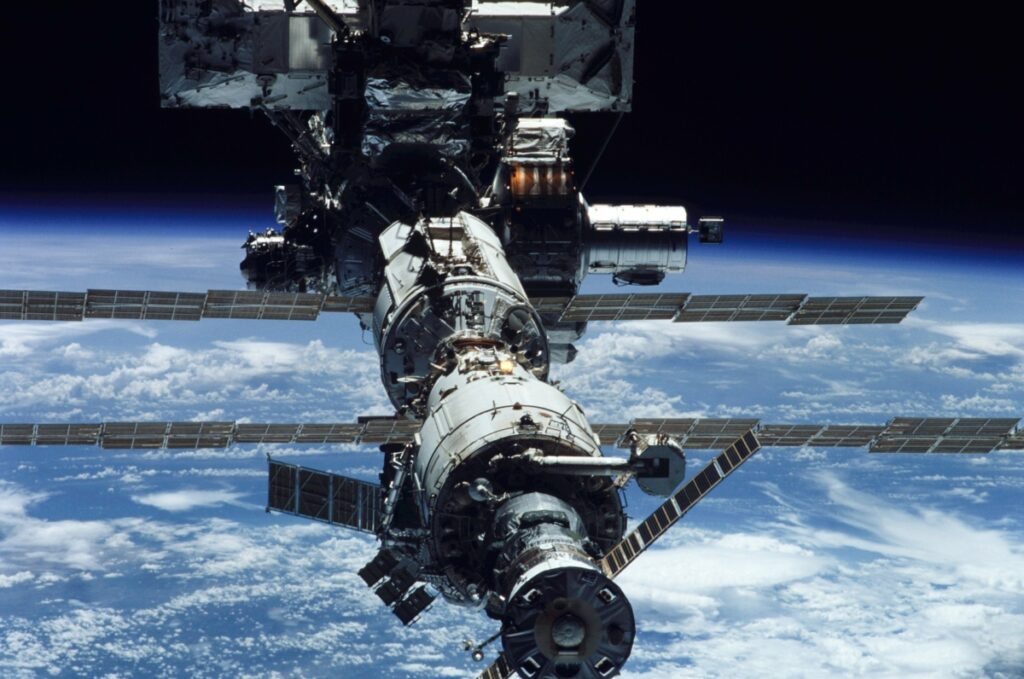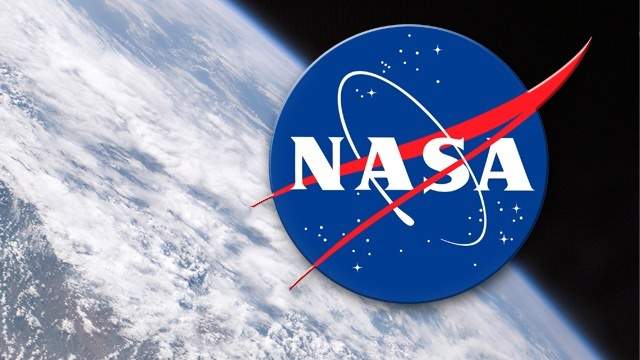National Aeronautics and Space Administration (NASA) is an independent U.S. governmental agency established in 1958 for the research and development of vehicles and activities for the exploration of space within and outside Earth’s atmosphere.
The organization is composed of four mission directorates: Aeronautics Research, for the development of advanced aviation technologies; Science, dealing with programs for understanding the origin, structure, and evolution of the universe, the solar system, and Earth; Space Technology, for the development of space science and exploration technologies; and Human Exploration and Operations, concerning the management of crewed space missions, including those to the International Space Station, as well as operations related to launching services, space transportation, and space communications for both crewed and robotic exploration programs.

A number of additional research centers are affiliated, including the Goddard Space Flight Center in Greenbelt, Maryland; the Jet Propulsion Laboratory in Pasadena, California; the Johnson Space Center in Houston, Texas; and the Langley Research Center in Hampton, Virginia. Headquarters of NASA are in Washington, D.C.
History
The National Aeronautics and Space Administration began in 1958. Since then, NASA has achieved many scientific and technological breakthroughs in the studies of aeronautics, aerospace, and Earth and space science.

Major Breakthroughs by NASA
When NASA opened for business on October 1, 1958, it accelerated the work already started on human and robotic spaceflight.
NASA’s first high profile program was Project Mercury, an effort to learn if humans could survive in space.

This was followed by Project Gemini, which used spacecraft built for two astronauts to perfect the capabilities needed for the national objective of a human trip to the Moon by the end of the 1960s. Project Apollo achieved that objective in July 1969 with the Apollo 11 mission and expanded on it with five more successful lunar landing missions through 1972.
After the Skylab and Apollo-Soyuz Test Projects of the mid-1970s, NASA’s human spaceflight efforts again resumed in 1981, with the Space Shuttle program that continued for 30 years. The Shuttle was not only a breakthrough technology but was essential to its next major step in space, the construction of the International Space Station.
International Space Station
The first piece of the International Space Station was launched in November 1998. A Russian rocket launched the Russian Zarya (zar EE uh) control module. About two weeks later, the space shuttle Endeavour met Zarya in orbit. The space shuttle was carrying the U.S. Unity node. The crew attached the Unity node to Zarya.
More pieces were added over the next two years before the station was ready for people to live there. The first crew arrived on November 2, 2000. People have lived on the space station ever since. More pieces have been added over time. NASA and its partners from around the world completed the construction of the space station in 2011.
The space station has made it possible for people to have an ongoing presence in space. Human beings have been living in space every day since the first crew arrived. The space station’s laboratories allow crew members to do research that could not be done anywhere else. This scientific research benefits people on Earth. Space research is even used in everyday life. The results are products called “spinoffs.” Scientists also study what happens to the body when people live in microgravity for a long time. NASA and its partners have learned how to keep a spacecraft working well. All of these lessons will be important for future space exploration.

The transformation journey of NASA
NASA today is a very different beast from the NASA of the 1960s. Though many would call that decade NASA’s golden age, NASA’s innovation and influence are even greater today.
Since the Apollo program, NASA has faced funding cuts, competition from other nations for space leadership, and a radical restructuring of its operating environment due to the emergence of commercial space — all of which have forced the organization to change its ways of thinking and operating.
Over the past few decades, not only has NASA delivered crucial technologies for society, such as water filtration systems, satellite-based search-and-rescue, and UV coating on eyeglasses, it has also evolved its dominant logic and business model. NASA has moved from being a hierarchical, closed system that develops its technologies internally, to an open network organization that embraces open innovation, agility, and collaboration.
This reinvention demonstrates that substantial organizational change is possible, even amid barriers such as regulations and politics. It offers an example of what we call “strategic agility,” or the ability to effectively (and continually) adapt how a firm operates and competes. This is not driven by a single leader, but by a multitude of champions scattered around the organization who push forward initiatives that slowly create change.
Also Read: Tesla – The Saga of Creative Ideas Continues
The challenges facing NASA
During the Apollo program, NASA’s funding peaked at 4.5% of the federal budget (US$5,250 million) in 1966. But shortly after the first moon landing in 1969, their budget plummeted. It is currently at less than o.5% of the federal budget.
Meanwhile, the organization’s mission aspirations grew bolder. The Commercial Space Launch Act of 1984 (and amendments in 1988 and 2004) called for government agencies such as NASA to support the development and growth of commercial space. This not only necessitated a more collaborative way of operating, but it also called for the agency to differentiate its missions. As commercial space organizations began to drive more low-earth orbit (up to 2,000 km from the earth) activities, NASA has had to shift its efforts toward exploring deep space, accomplishing further manned missions, and setting up permanent facilities on the moon as a gateway for missions to Mars and beyond.
The emergence of commercial space has also gone hand in hand with an accelerating pace of technology development. This means that the technologies necessary for successful space-faring, particularly human space travel beyond low earth orbit, cannot all be developed by a single organization. NASA has had to become more outward-looking and network-oriented to develop and acquire the technologies it needs.
Competing nations have also been expanding their space exploration efforts. The space industry is now a global, multi-faceted, multi-stakeholder endeavor, where commercial activity accounts for the lion’s share of value. (Over three-quarters of the $350 billion global space industry revenues are driven by commercial products, services, infrastructure, and support industries.) Sustaining NASA’s and the USA’s space leadership has called for a new way of organizing and competing.
The accomplishments NASA has made over the past 60 years are all stepping stones to greater and exciting things. They will work to increase an understanding of Earth, and strive to answer the question, “Are we alone?”




So Great! I need some infos in this post for my rapport de stage. Can i have your contact please? I need your permission to quote it :D. Anyway, That’s great job. Keep going.